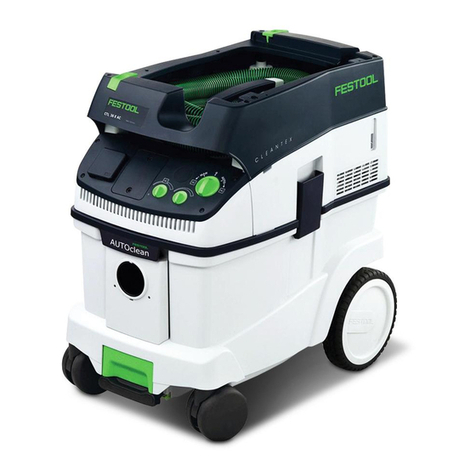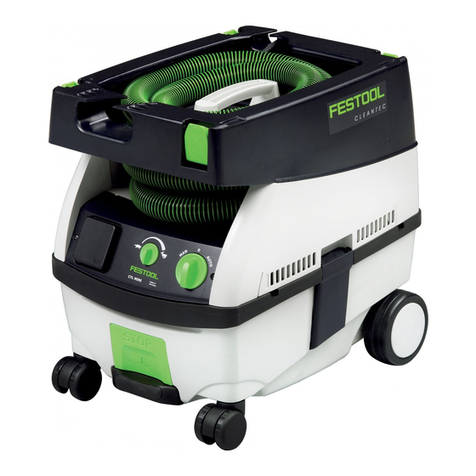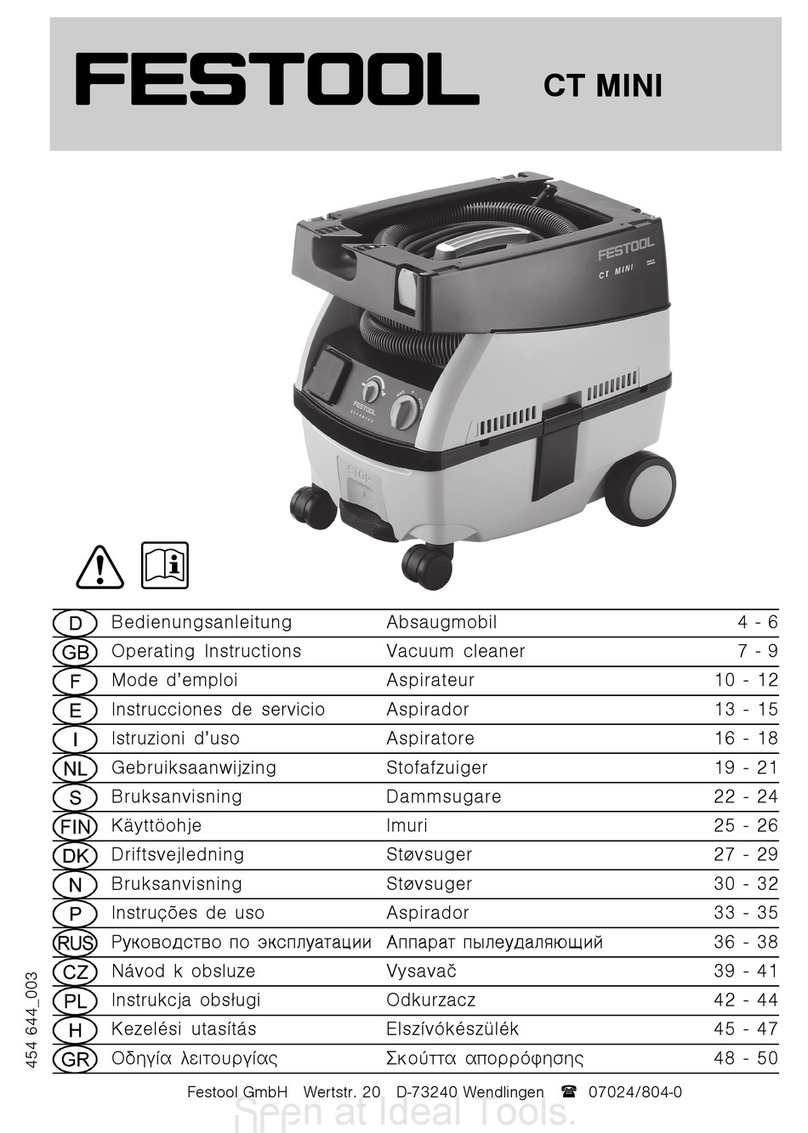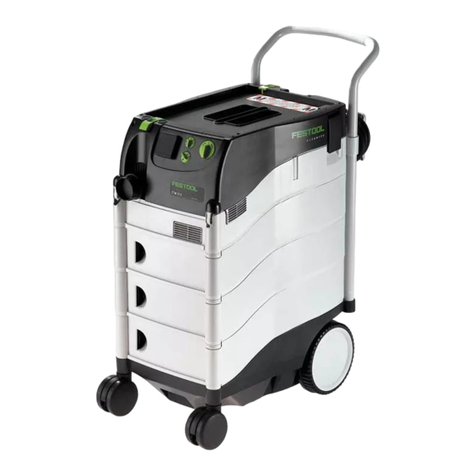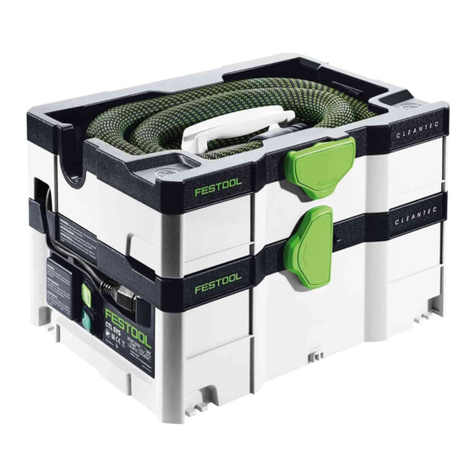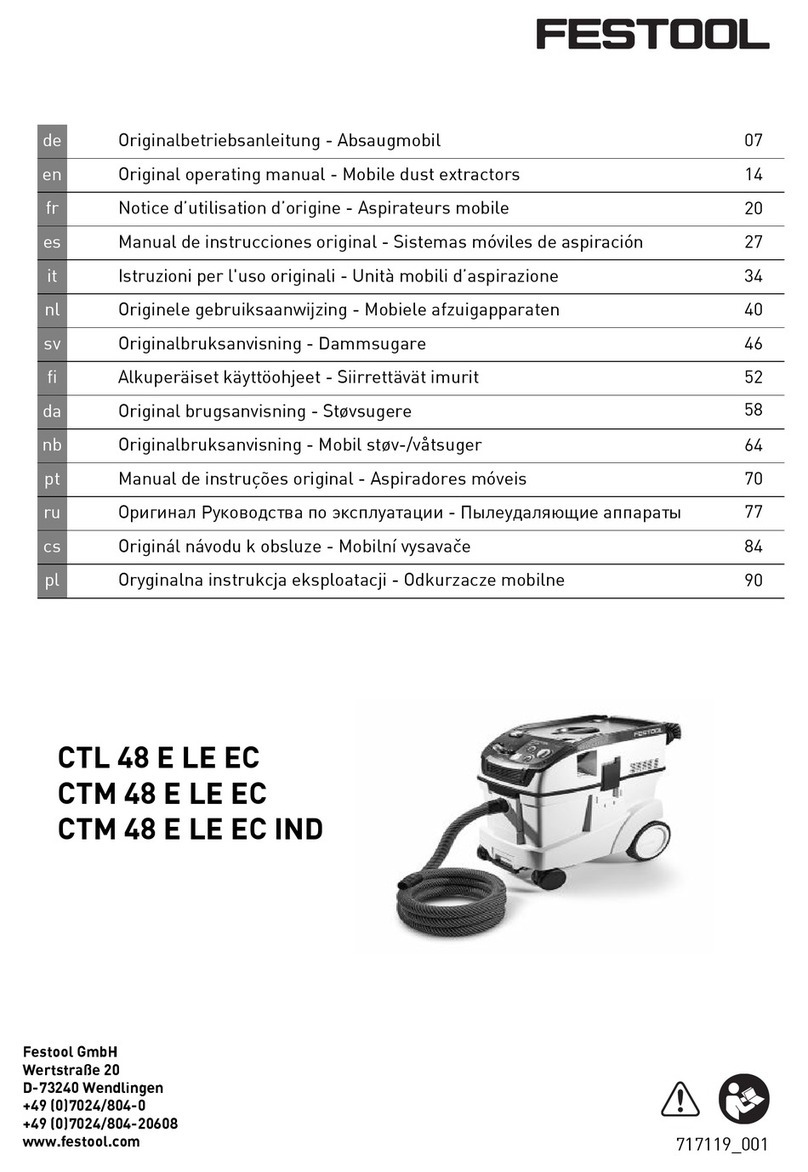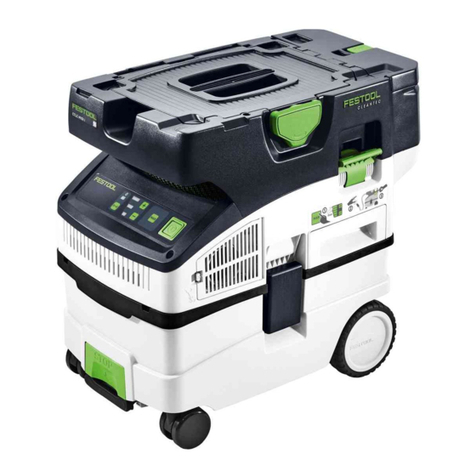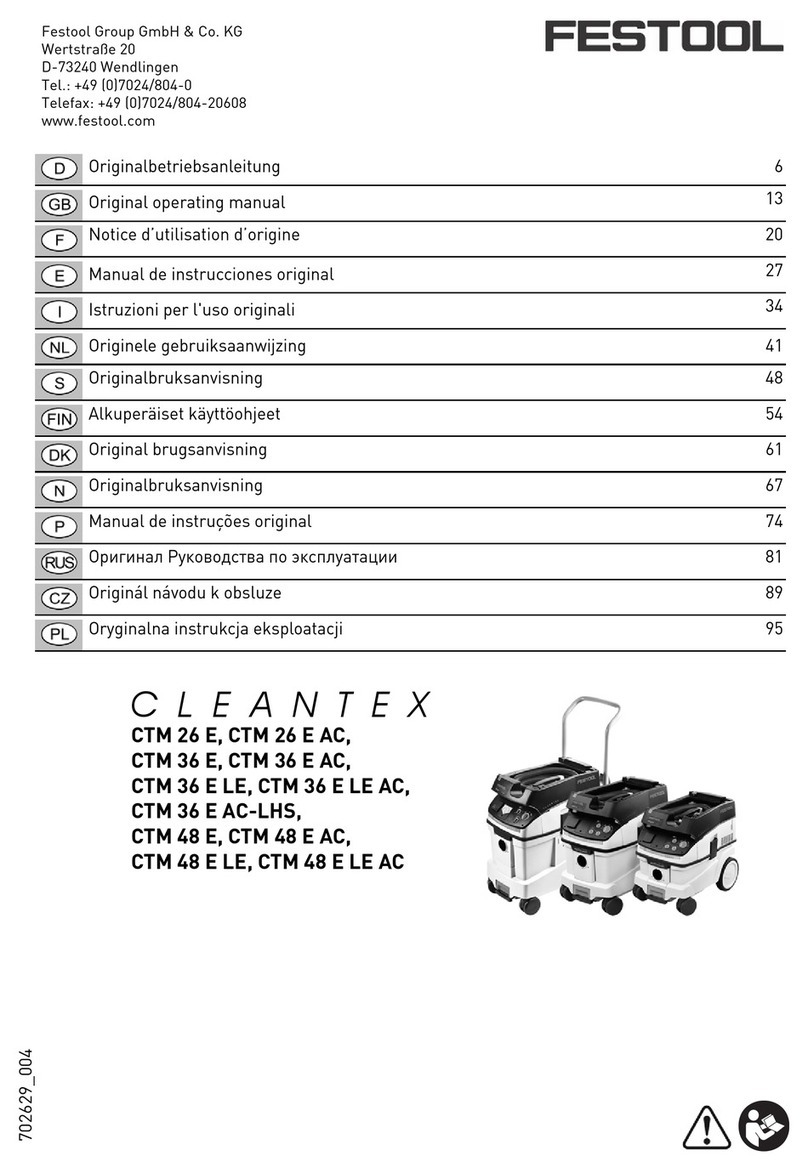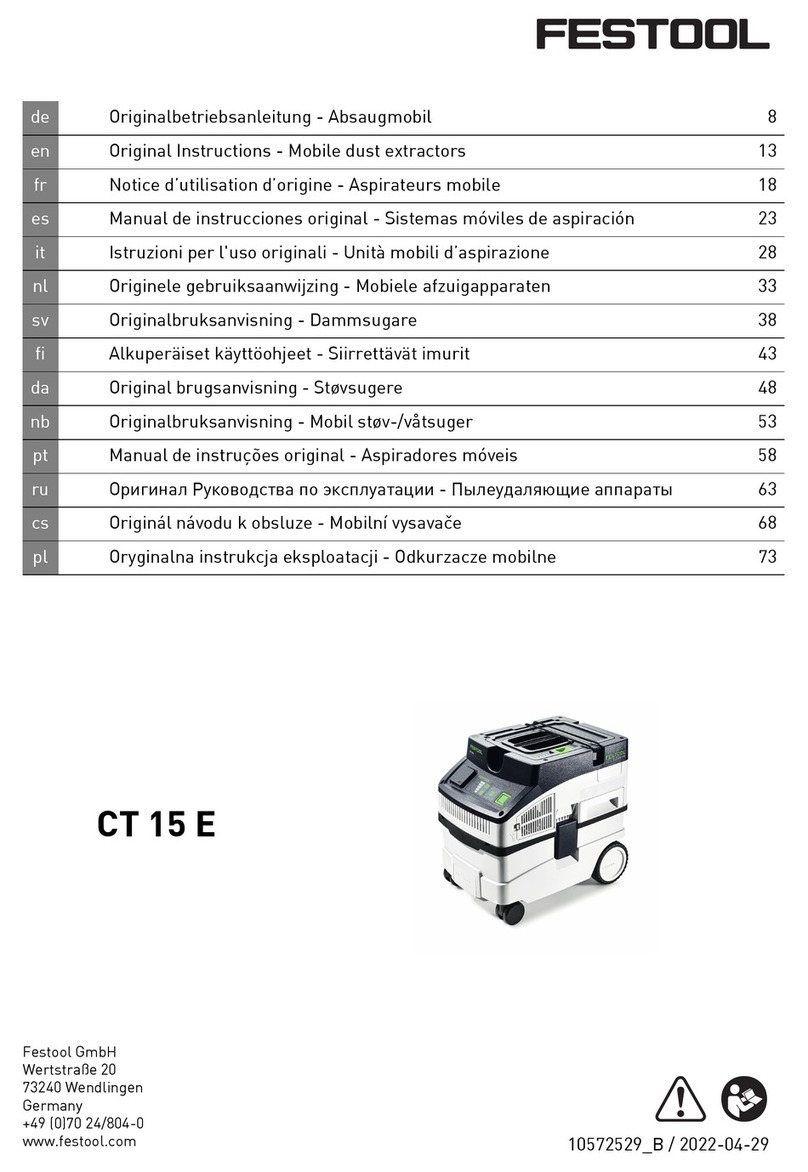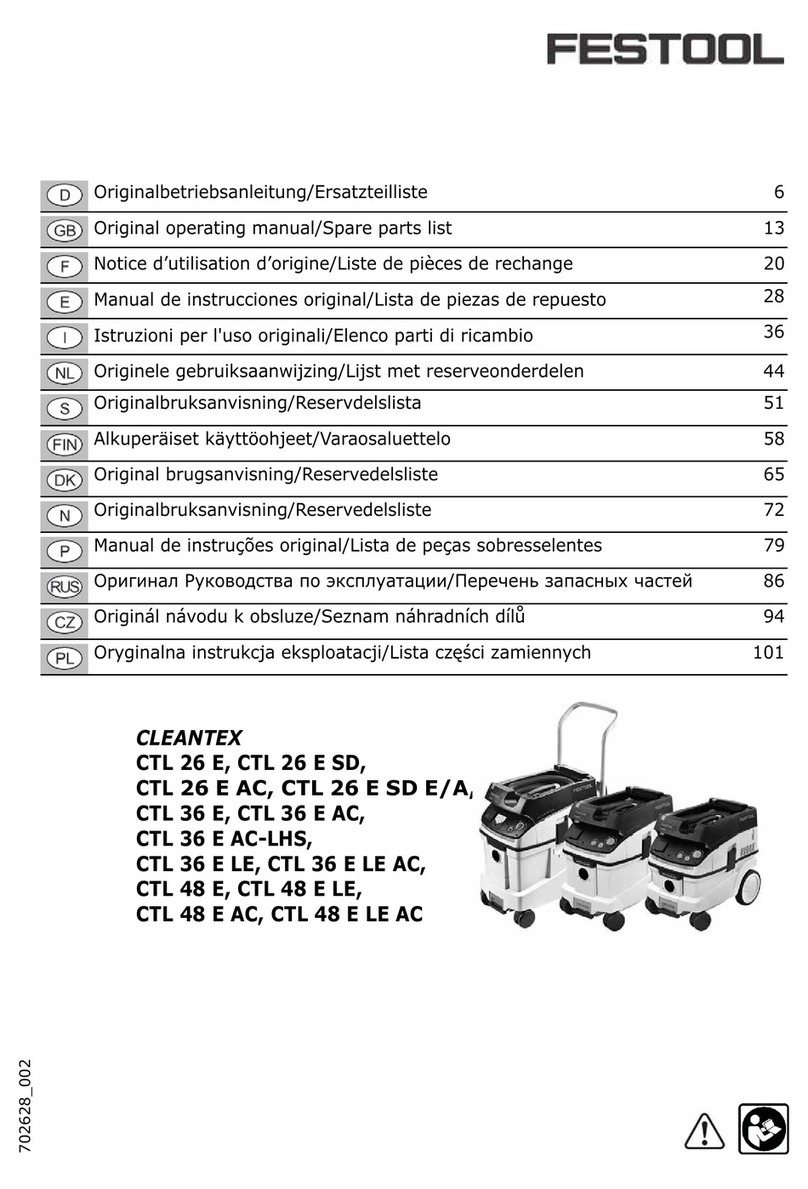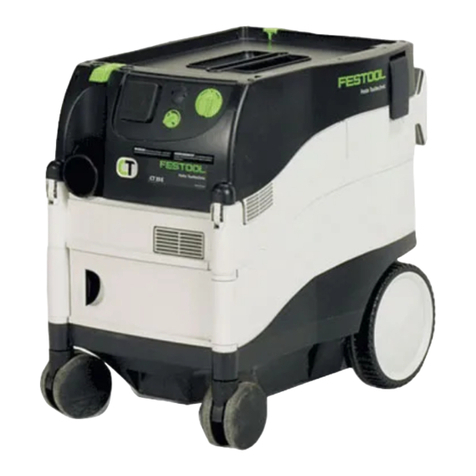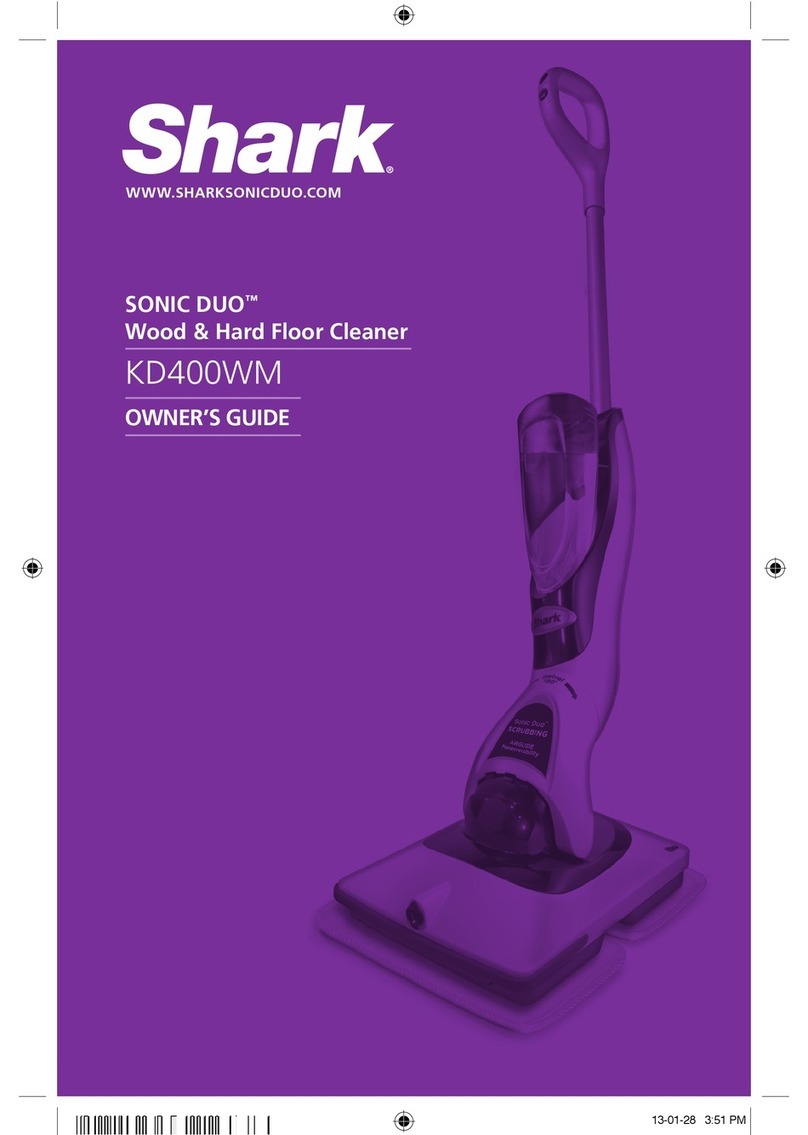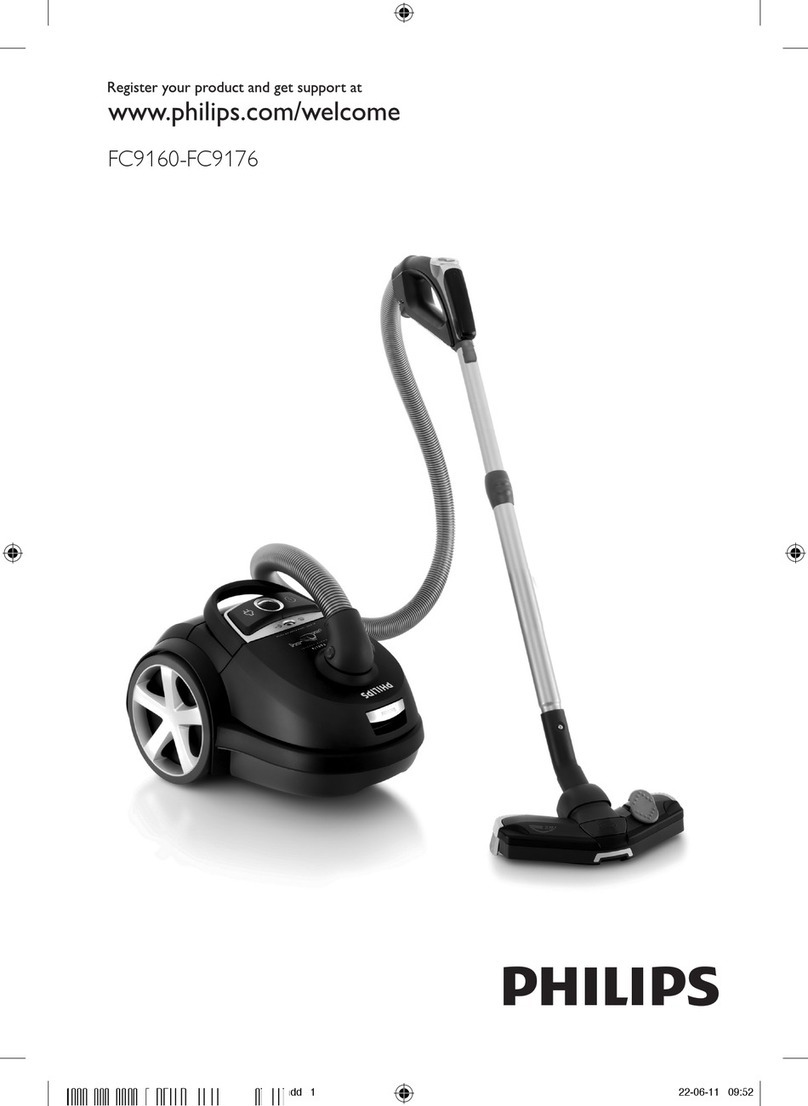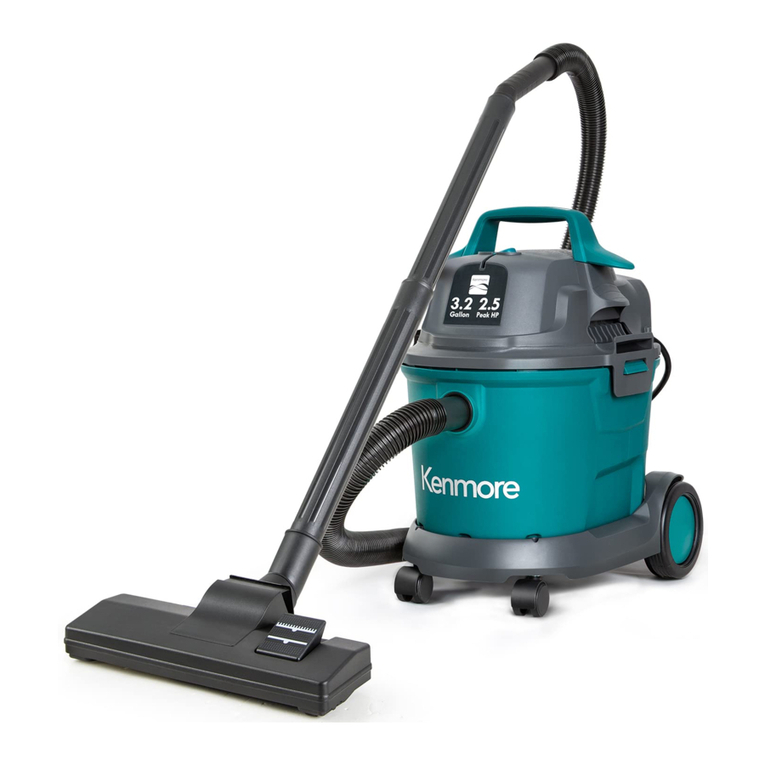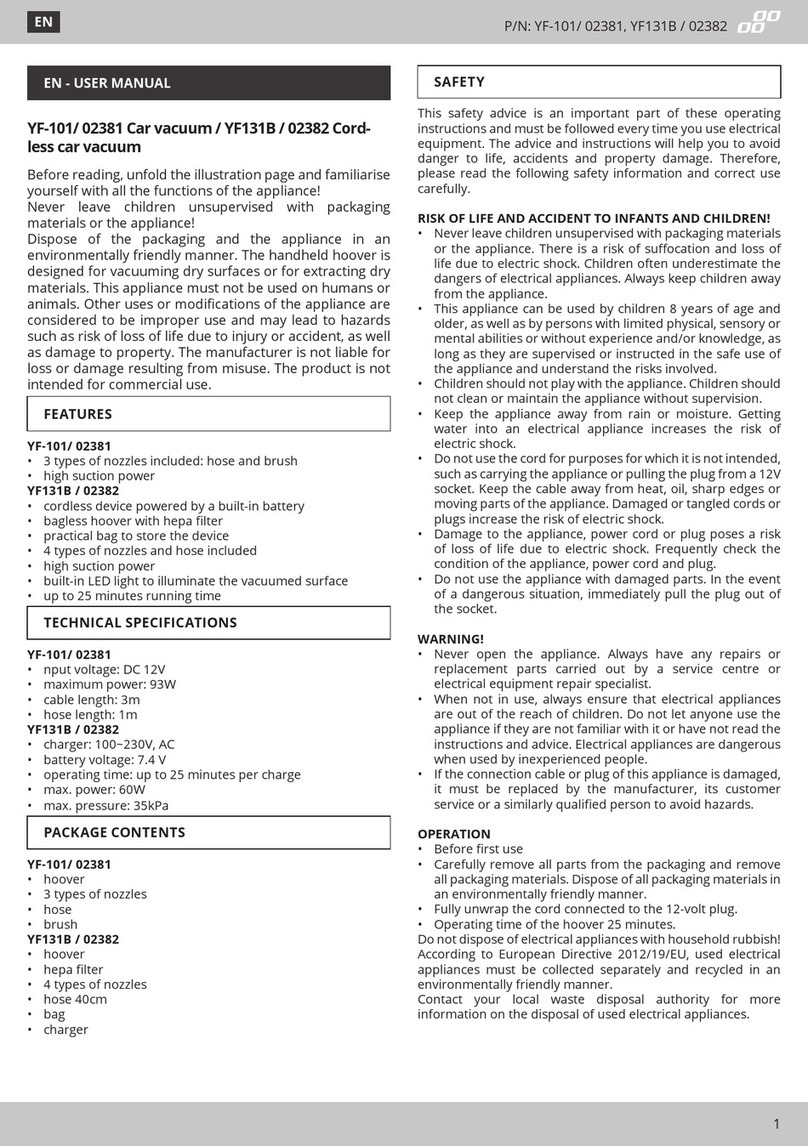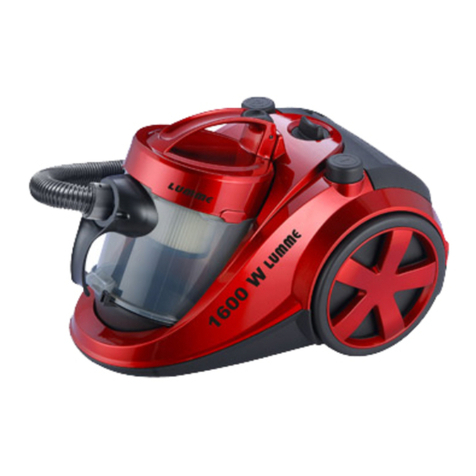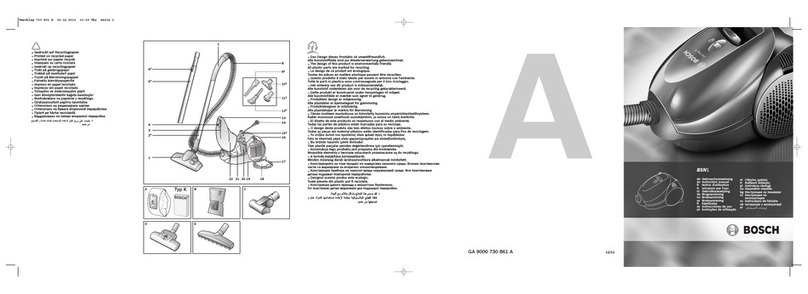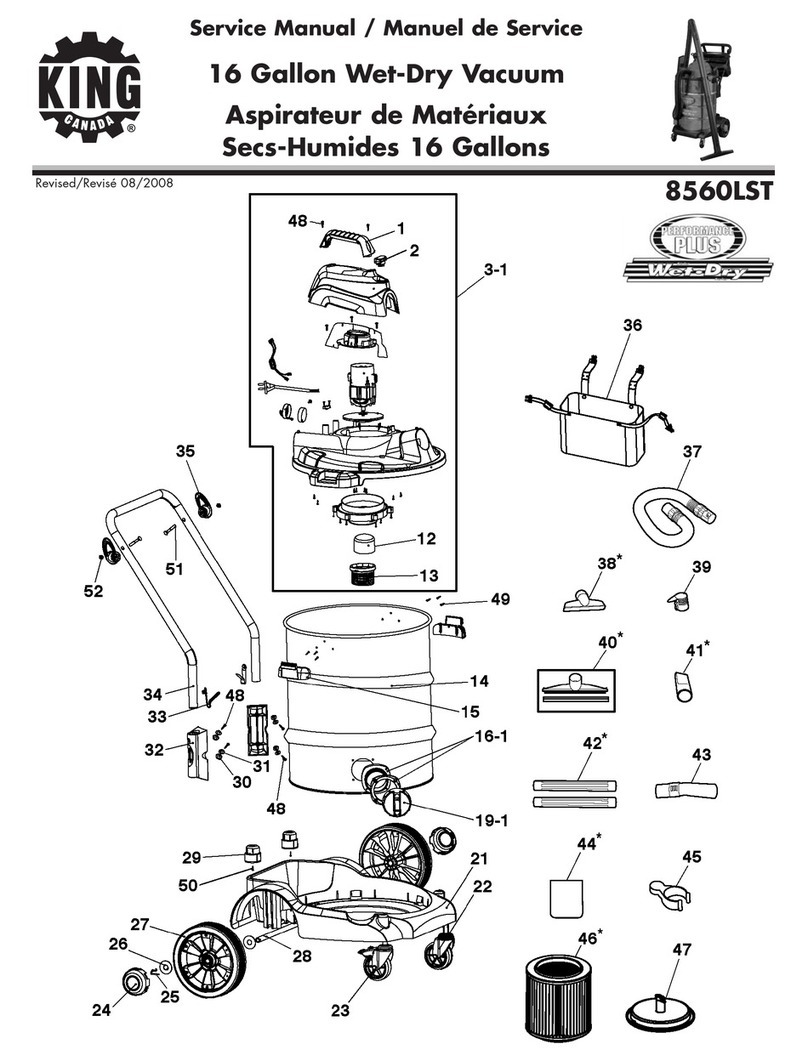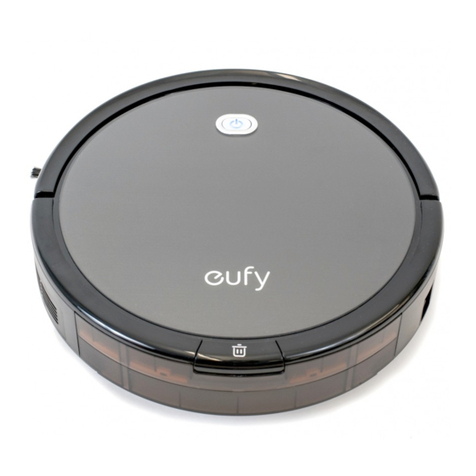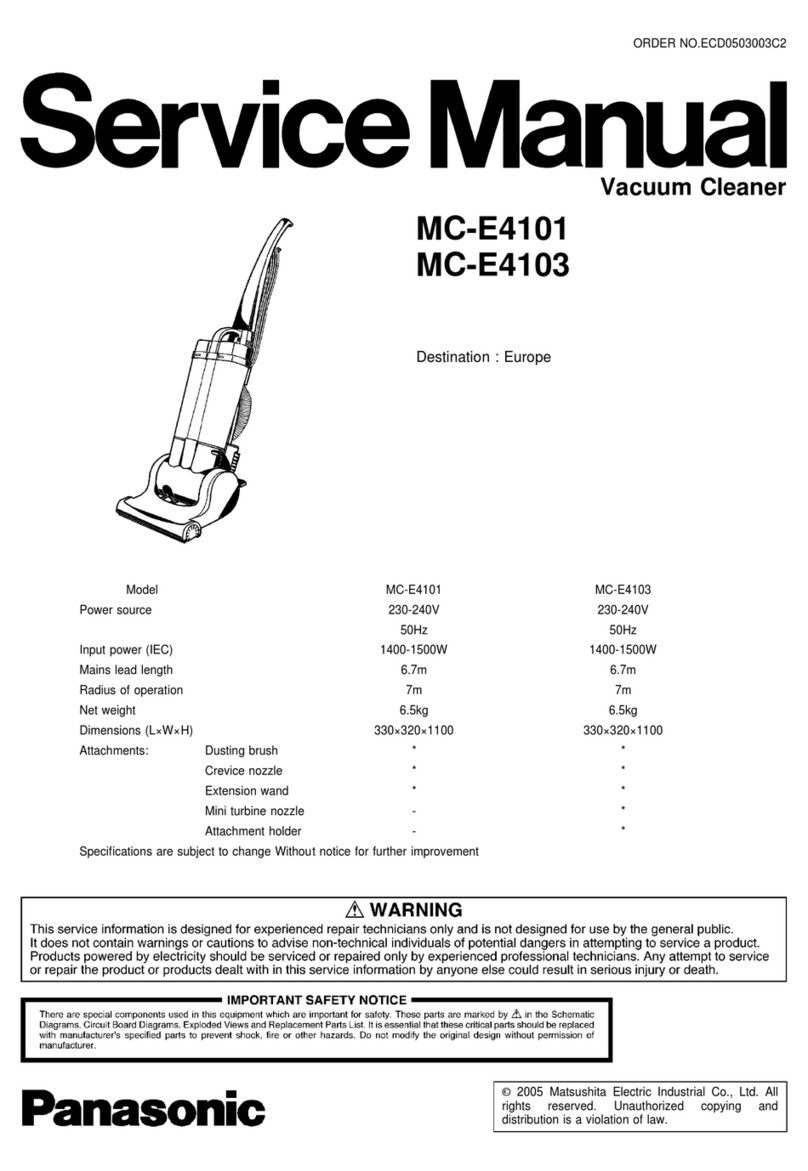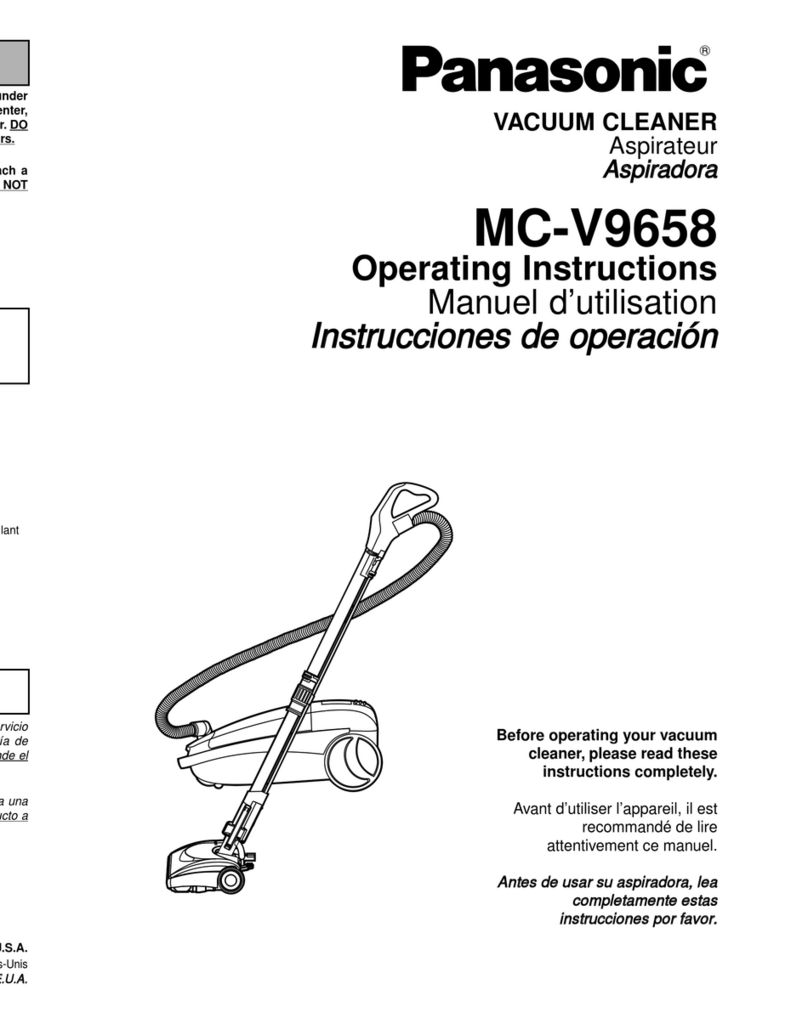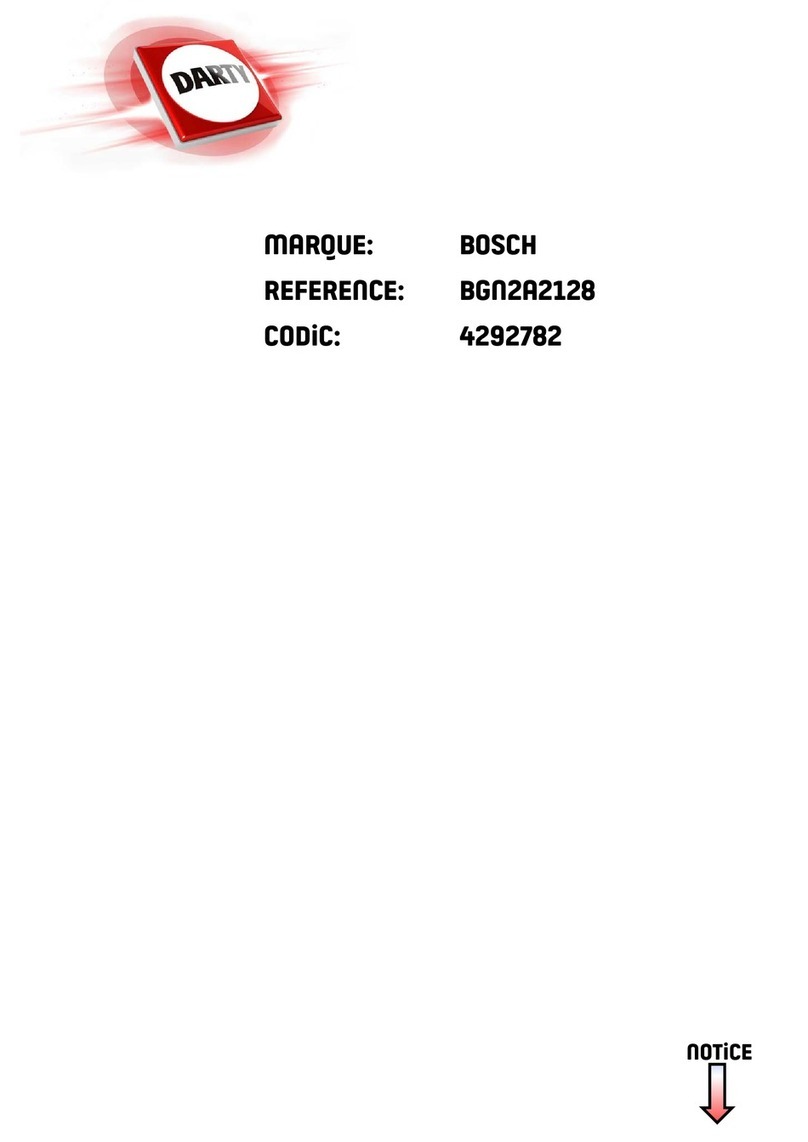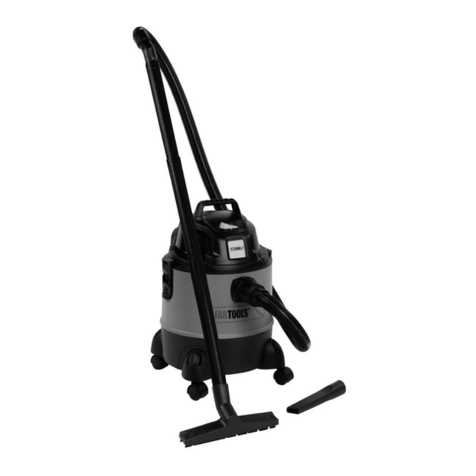8
SAVE THESE INSTRUCTIONS
GROUNDING INSTRUCTIONS
This appliance must be grounded. If it should mal-
function or breakdown, grounding provides a path of
least resistance for electric current to reduce the risk
of electric shock. This dust extractor is equipped with
a cord having an equipment-grounding conductor
and grounding plug. The plug must be inserted into a
appropriate outlet that is properly installed and
grounded in accordance with all local codes and ordi-
nances.
WARNING
- Improper con-
nection of the equipment grounding conductor can
result in a risk of electric shock. Check with a qual-
ified electrician or service person if you are in doubt
as to whether the outlet is properly grounded. Do
not modify the plug provided with the dust extractor
- if it will not fit the outlet, have a proper outlet in-
stalled by a qualified electrician.
This ap-
pliance is
for use on
a nominal
120-V cir-
cuit and
has a
ground-
ing at-
tachment
plug that
looks like
the plug
illustrat-
ed in sketch A in Figure beside. Make sure that the
appliance is connected to an outlet having the same
configuration as the plug. No adaptor should be
used with this appliance.
Polarization Instructions
To reduce the risk of electric shock, this vacuum
cleaner has a polarized plug (one blade is wider
than the other). This plug will fit in a polarized out-
let only one way. If the plug does not fit fully in the
outlet, reverse the plug. If it still does not fit, con-
tact a qualified electrician to install the proper out-
let. Do not change the plug in any way.
Further safety instructions
–Thisappliancemustnotbeusedbypersons(in-
cluding children) with reduced physical, sensory
or mental capabilities, or lack of experience and
knowledge.
Children
need to be supervised to
ensure they do not play with the appliance.
Health hazard by dust
WARNING!
Various dust created by power
sanding, sawing, grinding, drilling and other
construction activities contains chemicals
known (to the State of California) to cause cancer,
birth defects or other reproductive harm. Some ex-
amples of these chemicals are:
•leadfromlead-basedpaints,
•crystallinesilicafrombricksandcementandother
masonry products, and
•arsenicandchromiumfromchemicallytreated
lumber.
The risk from these exposures varies,
depending on how often you do this type
of work. To reduce your exposure to
these chemicals: work in a well venti-
lated area, and work with approved safety equipment,
such as dust masks that are specially designed to fil-
ter out microscopic particles. Wash hands after han-
dling.
